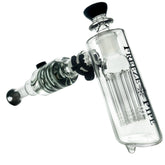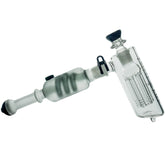Stone Pipes
-
Vendor:Smoke Drop
Wood Smoking Stone w/ Brass Chamber
These pocket-sized smoking stone pipes have a unique rounded body design. The herb chamber on these pipes is made from brass metal, as is the bowl cap which doubles as a wind guard. Colors and styles vary. Highlights 1.75 inches long Wooden hand pipe...- $9.99
- $9.99
- Unit price
- per
-
Vendor:DankStop
Stone Pipe - Fluorite
With a unique combination of natural and engineered composition, Stone Pipe's have a sleek and precise design. Each stone has its own unique color and design, making almost no two pipes the same! You can easily remove the mesh bowl where you put your...- $29.99
- $29.99
- Unit price
- per
- Fluorite
- Jade















